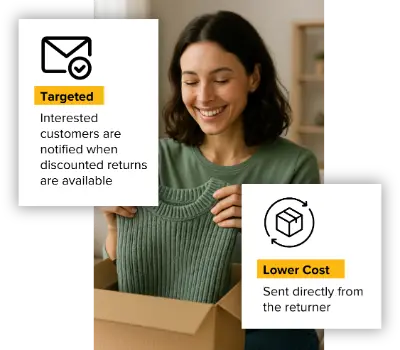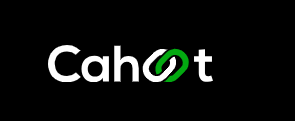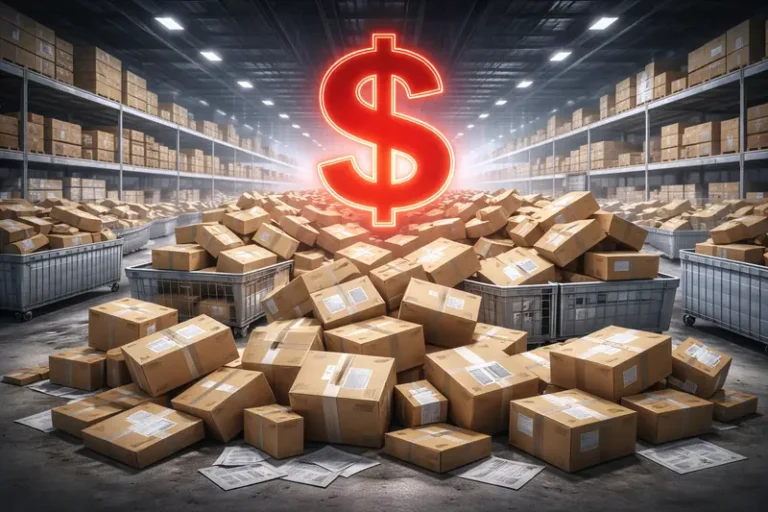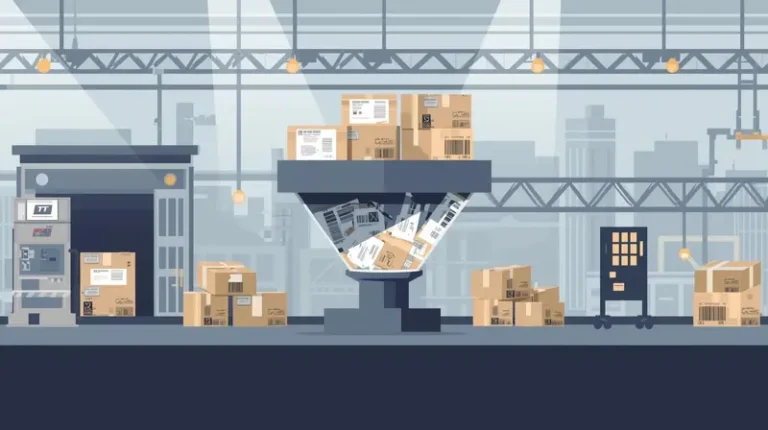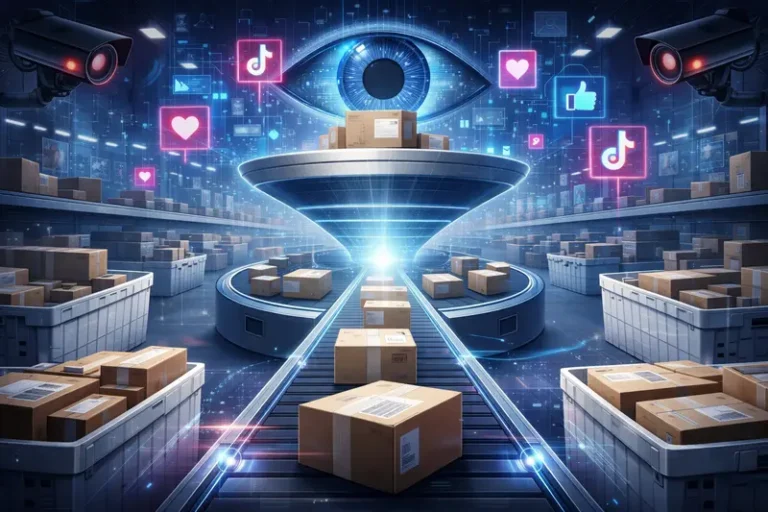Extended Producer Responsibility (EPR): How Peer-to-Peer Returns Solve for It

Last updated on July 09, 2025
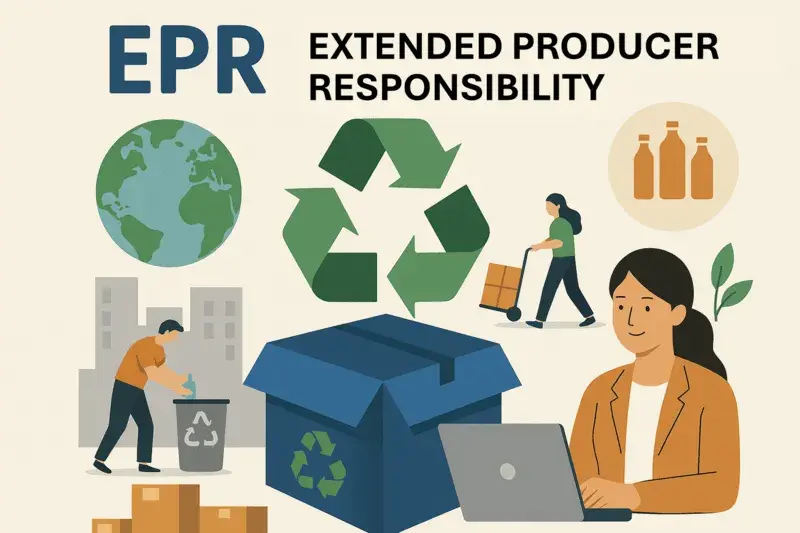
In this article
 6 minutes
6 minutes
The way we deal with waste is changing fast. Governments around the world are done letting brands ship products with zero thought about what happens when they break, expire, or get returned. Enter Extended Producer Responsibility (EPR), a policy model that makes producers financially and operationally accountable for their products’ full life cycle, including after consumers are done with them.
And while most ecommerce operators are bracing for the added costs, smart brands are already asking a different question: What if we could turn EPR compliance into a competitive advantage?
Let’s dig into how EPR works, what’s shifting globally, and how Cahoot’s peer-to-peer returns program just might be the most elegant solution ecommerce sellers never saw coming.
What Is Extended Producer Responsibility?
Extended Producer Responsibility, or EPR, is a policy approach that shifts the financial responsibility and logistical burden for waste management away from governments and consumers and places it squarely on the shoulders of producers. That means brand owners, manufacturers, and importers must now manage the end-of-life of their products. Whether it’s packaging waste, electronics, beverage containers, or textiles, producers are expected to pay for or directly handle the collection, reuse, recycling, or disposal of their waste.
And it’s not optional anymore. EPR programs have already been implemented or introduced in many countries, from Canada to the EU to parts of the U.S. In fact, over 60 jurisdictions now have some form of EPR legislation, and more are passing every year. Even developing countries are starting to adopt similar policy approaches to address waste management, limited resources, and environmental impacts.
The idea is simple:
If you make it, you should figure out how to unmake it.
Make Returns Profitable, Yes!
Cut shipping and processing costs by 70% with our patented peer-to-peer returns solution. 4x faster than traditional returns.
See How It WorksWhy EPR Matters for Ecommerce (and Fast)
Most ecommerce brands don’t manufacture the products they sell, but that doesn’t mean they’re off the hook. In most EPR laws, the “producer” includes brand owners, importers, and even large online marketplaces. That means if you ship to consumers in European Union countries, you might already be subject to EPR registration, fees, and reporting obligations, whether you’re selling soap, apparel, furniture, or waste electronics.
A few examples:
- France, Germany, and Austria now require ecommerce sellers to register with a Producer Responsibility Organization (PRO) and report packaging quantities sold
- California, Colorado, and Oregon have passed EPR laws covering packaging, shifting recycling costs from local governments to producers
- The European Union is expanding EPR schemes to textiles and batteries while increasing financial responsibility on producers for meeting recycling targets
Bottom line: the legislation is no longer just about compliance; it’s reshaping how brands think about production, materials, costs, and returns.
The Challenge: EPR Compliance Is Complex, Costly, and Ongoing
Here’s the hard truth: complying with EPR is expensive. Brands must:
- Register in each country or state
- Report SKU-level data on materials used
- Pay eco-modulation fees based on how sustainable the product or packaging is
- Handle logistics for collection, reuse, or recycling
- Prove proper disposal through auditable documentation
- Work with a Producer Responsibility Organization or risk being delisted from marketplaces like Amazon Germany
This is a ton of work. And worse, it’s ongoing; producers must continually track and report quantities sold, what was returned, how it was processed, and where the materials went. For ecommerce operators already dealing with slim margins and tight cash flow, EPR can feel like an existential threat.
So what’s a brand to do?
Convert Returns Into New Sales and Profits
Our peer-to-peer returns system instantly resells returned items—no warehouse processing, and get paid before you refund.
I'm Interested in Peer-to-Peer ReturnsEnter Cahoot: Turning Returns into an EPR Compliance Asset
Here’s where Cahoot’s peer-to-peer ecommerce returns solution changes the game.
Returns are one of the biggest blind spots in EPR. Returned goods often fall through the cracks of reuse and recycling programs, creating waste and compliance headaches. Traditionally, a returned item is shipped back to a warehouse, inspected, and often discarded or sent to liquidation, especially in fast fashion or electronics. That’s a wasted product, wasted materials, and additional shipping, all of which hurt your EPR score.
But what if that returned product could skip the warehouse altogether and get shipped directly to the next buyer?
That’s exactly what Cahoot’s peer-to-peer returns model does.
Instead of bringing a return back into centralized inventory, Cahoot reassigns it in real-time to the next customer who wants it. The return is rerouted, minimizing extra handling, materials, and emissions. And yes, it’s fully traceable for EPR reporting.
Here’s How Cahoot Solves for EPR:
1. Reduces Waste and Increases Reuse
Returned products are resold, not discarded. That extends product life, lowers end-of-life management costs, and keeps items out of landfills, key outcomes for EPR compliance.
2. Cuts Down on Packaging Waste
Because the return never goes back to the original warehouse, the need for repackaging is eliminated. That’s less packaging waste and fewer new materials in circulation.
3. Minimizes Reverse Logistics Emissions
No second trip across the country. No return to origin. Just direct-to-new-customer fulfillment. This slashes the carbon footprint of the return journey and helps brands meet sustainability targets.
4. Enhances Product Stewardship Reporting
With Cahoot, returns are tracked from the original buyer to the next. That data visibility gives brands a documented chain of custody they can use for EPR program reporting.
5. Avoids Fees and Penalties
Many EPR shifts include eco-modulated fees, meaning the greener your product’s life cycle, the less you pay. Cahoot helps brands reduce costs by showing responsible, circular product management.
No More Return Waste
Help the planet and your profits—our award-winning returns tech reduces landfill waste and recycles value. Real savings, No greenwashing!
Learn About Sustainable ReturnsEPR and Returns: A Match Made for Reinvention
Let’s be honest, most brands aren’t thinking about returns when they think about EPR legislation. But they should be. A returned product that gets trashed is the ultimate EPR failure. One that gets rerouted and reused? That’s a policy win, an environmental win, and a cost-saving win.
What’s more, Cahoot gives ecommerce operators a rare opportunity: To not just comply with EPR, but to lead.
Final Thoughts: Don’t Just Comply, Differentiate
EPR isn’t going away. In fact, it’s spreading fast, and consumers are paying attention. Brands that embrace reuse, reduction, and responsibility will earn trust. Those who treat returns like an afterthought may face penalties, bad PR, or worse, delisting from key markets.
The good news? Cahoot’s peer-to-peer returns solution is already helping brands across categories, from apparel to electronics, cut costs, reduce environmental impacts, and prove EPR compliance in a way that scales with growth.
That’s not just smart compliance, that’s smart business.
Turn Returns Into New Revenue
